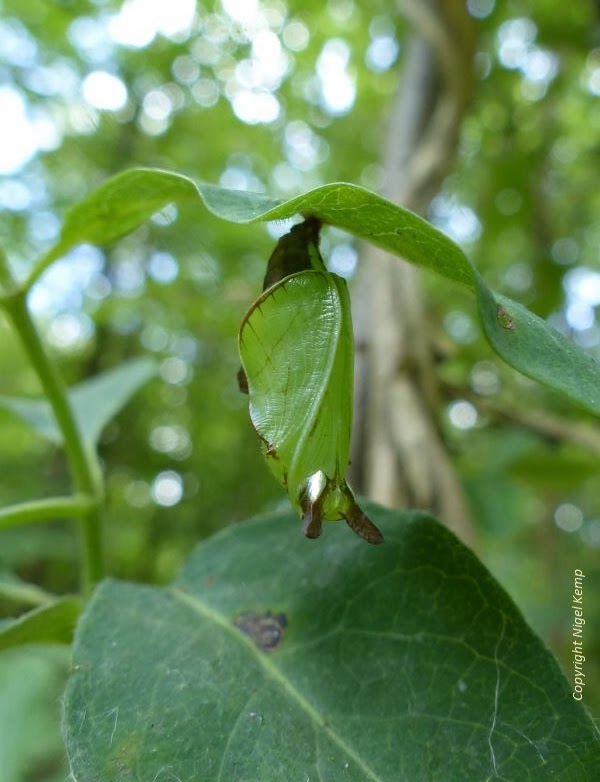Butterflies and moths are near the bottom of the food chain and they have many predators. Different species adopt numerous strategies to protect themselves from being eaten. Some species are extremely distasteful to predators and advertise the fact by displaying warning colours that are generally recognised by predators. Other species use startle tactics, suddenly displaying eyespots and other markings designed to confuse a predator long enough for the target to make its escape.
Butterflies and moths are probably most vulnerable when they are at rest or during their immature stages and in the vast majority of cases, cryptic markings are used to make them blend into the background. Again, different strategies are adopted, ranging from straight-forward camouflage markings to mimicking broken twigs or bird droppings.
Nearly all butterflies roost with their wings closed and it is usually their underwings that are cryptically marked. On the other hand, moths nearly always roost with wings spread and the upperside of their wings are often unobtrusively marked.
The Grayling (Hipparchia semele)
This butterfly virtually disappears into the background when at rest. If it feels threatened it will usually flash its eyespots before then taking off. The first photograph shows a female and the next two are of a male.
This butterfly virtually disappears into the background when at rest. If it feels threatened it will usually flash its eyespots before then taking off. The first photograph shows a female and the next two are of a male.
The Chinese Character (Cilix glaucata)
This species of moth is a classic bird dropping mimic.
The following photographs are of several Geometrid moths that are among many species that use their markings to blend into the background.
Red-green Carpet (Chloroclysta siterata)
Green Pug (Pasiphila rectangulata)
Double-striped Pug (Gymnoscelis rufifasciata)
Pale Brindled Beauty (Phigalia pilosaria)
Waved Umber (Menophra abruptaria)
Engrailed (Ectropis bistortata)
Grey Birch (Aethalura punctulata)
Even larger species such as the hawkmoths can be easily overlooked from just a short distance away.
Lime Hawkmoth (Mimas tiliae)
Eyed Hawkmoth (Smerinthus ocellata)
The diagonal body stripes make sense when you see the larva resting on the foodplant.
Lobster Moth (Stauropus fagi)
Buff-tip (Phalera bucephala)
This species is a broken twig mimic and bears an uncanny resemblance to a piece of birch.
Pale Prominent (Pterostoma palpina)
Another stick mimic.
Pale Pinion (Lithophane hepatica)
A stick or bud mimic.
Merveille du Jour (Dichonia aprilina)
Red Underwing (Catocala nupta)




















































